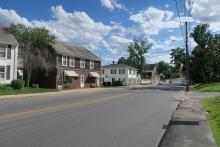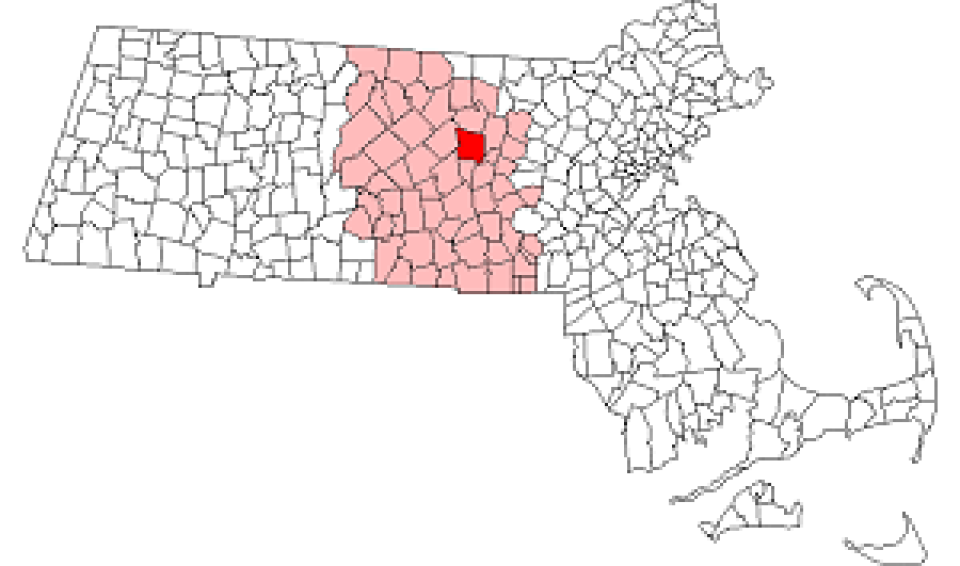
As communities across the Commonwealth of Massachusetts are at various planning stages in laying the groundwork to build their own municipal broadband networks, a rural Bay State town about 50 miles west of Boston has moved past the planning phase and is now offering municipal fiber-to-the-home (FTTH) service.
In Sterling (est. pop. 8,000) – the town that lays claim to Mary Sawyer Tyler, said to have inspired the “Mary Had a Little Lamb” poem – the town’s municipal utility is building out its aptly named Local Area Municipal Broadband (LAMB) network.
The project was initiated more than five years ago as a new division within the century-old Sterling Municipal Light Department (SMLD). As one of about 40 of the state’s 351 towns and cities with its own municipal electric utility, SMLD was awarded a $150,000 state grant to help finance the construction of a 23-mile regional I-Net ring in 2020. A year later, LAMB lit up its first residential customer in April of 2021.

Following an incremental approach, earlier this year, the LAMB added its 50th subscriber as construction crews are on track to build out a town-wide fiber network by the end of 2024.
Connecting with Nearby Towns
Like other communities across the nation with an established municipal utility, from a design and engineering standpoint, it was a relatively easy leap into broadband for SMLD, which currently supplies electricity to more than 3,700 residential, commercial and municipal customers.
Hanging fiber along SMLD’s utility poles to first build the network backbone, it allowed the town to connect 26 municipal buildings, which included the police and fire stations, library, town hall, the department of public works, water and radio towers, as well as SMLD’s substations.
It was a collaborative effort working with nearby towns and their municipal utilities (Shrewsbury, Boylston, and West Boylston). The four towns created an inter-municipal agreement that paved the way for each town to hang fiber on their utility poles. But it was Sterling’s proximity to the Shrewsbury Electric and Cable Operations (SELCO) system that inspired Sterling to move forward, seeing the success of Shrewsbury in upgrading its cable network to fiber.
Not only did the neighboring towns learn from one another, they shared resources. As Darren Borge, SMLD’s General Manager, told Broadband Communities magazine, “We split the costs three ways. We oversized the trunk line so everyone could take a part of the 432-count fiber cable for their system and not hinder the other systems’ fiber availability.”

The 23-mile fiber ring that was borne out of that effort – nine miles of which sweeps through Sterling – allowed SMLD to first connect the town’s municipal buildings. The second phase of the project, which is now ongoing, is to connect the town’s residents and businesses with the work being supplemented by the town’s American Rescue Plan funds.
Already, the town is saving $66,000 a year because it no longer has to rely on the telecommunication services of third-party vendors.
Flying Under the Radar
Before the LAMB network came along, Sterling residents had to rely on outdated Verizon DSL service or the monopoly offerings of Comcast. The connectivity speeds and customer service proved to be Verizon and Comcast’s Achilles heel, something the town is hoping will help them access the USDA ReConnect Loan and Grant program as the town continues to expand the network.
Or as Bill Underhill, SMLD’s network coordinator, told Broadband Communities magazine:
Our competitors’ speeds aren’t that good. We’re going to be able to show in the ReConnect filing that the speeds aren’t what they need to be and often don’t meet the minimal qualifications for what the FCC considers broadband.
Fortunately for Sterling, the town’s initiative flew under the radar of the telecom giants who often vigorously oppose municipal broadband projects. But now that the network is up and running, LAMB officials are banking on the superiority of fiber connectivity, local accountability, and attentive customer service to reach a take-rate that will make the network financially stable for years to come.
As Underhill notes:
Because we’re a municipal utility, accountability is much higher. My phone number and email are on the SMLD website, so if there’s a problem, a customer can reach out directly. We’re local and small, so we’re more in tune with what’s happening in the community that’s helpful to our customers.
LAMB Leg up on Competition
What gives LAMB another leg up on the competition is the cost of its service and the amenities that come with it. Subscribers have four symmetrical service tiers from which to choose: 250 Megabits per second (Mbps) for $65/per month; 500 Mbps for $80/month; 750 Mbps for $90/month; or gig speed service for $105/month.

With no extra costs or fees, subscribers also get 24-hour technical support; a dual-band Wi-Fi 6 router; a ROKU streaming stick; managed Wi-Fi services; a smart home app; and network security service.
And, now that Sterling has blazed a path to deliver FTTH service to its residents and businesses, SMLD is getting calls from nearby towns, such as Paxton and Princeton, for guidance on how those communities might build their own networks or if there is a possibility that Sterling can extend its network into those towns.
Header image of Sterling, MA Main Street courtesy of Wikimedia Commons, Attribution-ShareAlike 4.0 International (CC BY-SA 4.0)
Inline image of Sterling MA map courtesy of Wikimedia Commons, Attribution-ShareAlike 3.0 Unported (CC BY-SA 3.0)







